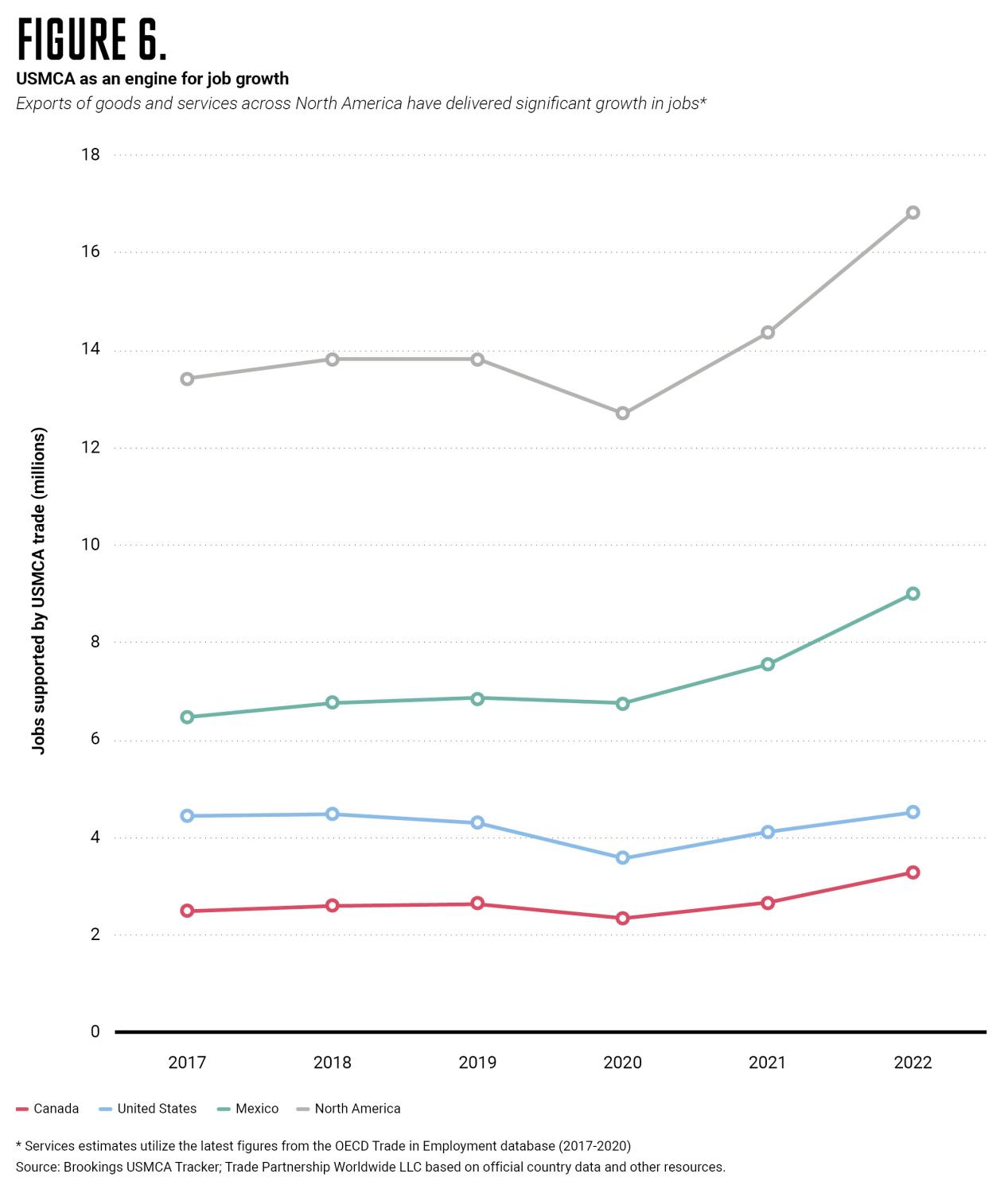This viewpoint is part of USMCA Forward 2024.
The entry into force of the final, worker-focused text of the United States-Mexico-Canada Agreement (USMCA), and in particular its Rapid Response Labor Mechanism (RRM), was a defining moment in the trajectory of trade and international economic policy.
From its start, the North American Free Trade Agreement (NAFTA) carried a heavy burden of criticism that it would undermine the rights of workers, the backbone of our economies. Over the next two decades, manufacturing communities across America were hollowed out. Families lost their livelihoods. U.S. workers were continually pitted against workers in Mexico, who remained structurally stymied from advocating for themselves because of corporatist protection unions aligned with employers.
The U.S. government ultimately chose to fight for workers in the renegotiated USMCA by incorporating a transformative tool, the RRM. This first-of-its-kind mechanism allows interested parties to precisely target specific facilities that are simultaneously benefiting from the USMCA while denying the rights of workers guaranteed by USMCA’s rules and Mexico’s recent labor reforms.
The RRM is a main reason the revamped USMCA gained the support of many members of U.S. Congress who have opposed free trade agreements. Likewise, labor organizations, including the American Federation of Labor and Congress of Industrial Organizations (AFL-CIO) and the United Steelworkers, actively endorsed the agreement.
A trade agreement can and should be a tool to ensure that workers get their fair share, and to embed economic security for working communities for today and for future generations, too.
The Biden-Harris administration has prioritized actively using the RRM. For us, the point of the renegotiated USMCA—and any trade deal—is for everyday people to know that trade can work for them. A trade agreement can and should be a tool to ensure that workers get their fair share, and to embed economic security for working communities for today and for future generations, too.
This is how we are beginning to create a race to the top in our hemisphere, together with the government of Mexico, to benefit workers in both of our countries, and we are seeing real change.
The RRM case at a General Motors facility in Silao, Mexico, is a prime example. After receiving a tip from a worker through the USMCA hotline, the United States self-initiated an RRM case, and our investigations found that ballots were destroyed during a vote on a proposed collective bargaining agreement between the facility and the workers’ union.
Only a few months after invoking the mechanism, workers elected an independent union and agreed to a new collective bargaining agreement that provided a first-year wage increase of 8.5% for approximately 6,000 workers, as well as a 5.3% increase in other benefits, including bonuses. In 2023, the union negotiated an additional salary increase of 12.5%—a total wage increase of nearly 30% since the RRM action.
The United States has also used the mechanism with great success in responding to issues raised for us by workers through the petition process. For example, we received a petition from the AFL-CIO, United Auto Workers, and an independent Mexican union known as Los Mineros, that alleged a longstanding and violent campaign to undermine organizing activities and union operations at the Teksid facility in Frontera, Mexico. The RRM action led the company to recognize Los Mineros, reinstate and pay backpay to 36 workers, and pay Los Mineros multiple years of previously-owed union dues.
Sometimes, the United States and Mexico have not agreed on how to resolve an RRM matter, as in the Grupo Mexico San Martin Mine case. There, the United States requested Mexico to review whether the mine operator in Zacatecas chose to bypass the existing union—which had the sole right to collectively bargain with the operator—and resume operations during an ongoing strike. After Mexico found no denial of workers’ rights, the United States requested a dispute settlement panel under the USMCA to make its own assessment. This marked the first time a panel has been convened under the mechanism and the process is proceeding under the RRM’s rules and procedures.
As of mid-January this year, the United States invoked the RRM 19 times overall and 13 times in 2023, at facilities that span various sectors, including the automotive, garment fabrication, transportation services, and call center industries. Eight cases have resulted in backpay for workers, six resulted in reinstatements for wrongfully terminated workers, two included severance pay, and eight resulted in the election of new independent unions. Canada has also worked with Mexico to restore workers’ rights at a pipe manufacturing facility in Silao, Mexico. The USMCA’s RRM is proving the concept that workers can secure their rights through innovations—in a trade agreement of all things.
These wins are why the RRM will continue to be a model for our trade initiatives. Since day one, the Biden-Harris administration’s approach to trade has been worker-centered. The USMCA RRM demonstrates how we can work with our trading partners to build our middle classes together.
The Brookings Institution is committed to quality, independence, and impact.
We are supported by a diverse array of funders. In line with our values and policies, each Brookings publication represents the sole views of its author(s).







Commentary
A trade agreement for the common good
March 6, 2024